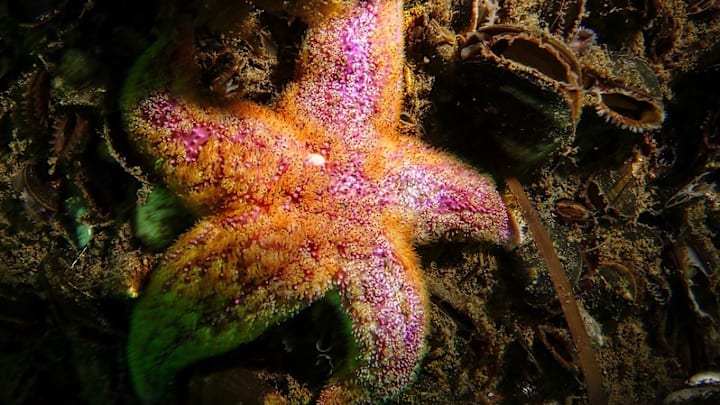A post-World War II munitions dump in the Baltic Sea has created a regular Bikini Bottom, complete with fish, crabs, and tiny invertebrates, according to a new study. Surprisingly, the high levels of toxic material inside the weapons don’t seem to bother the marine animals.
A Sunken Scrapyard
Researchers from three German institutions used remotely-operated underwater vehicles (ROVs) to survey a site in the Bay of Lübeck, a basin in the Baltic Sea, where Germany dumped unused munitions after the World War II. The stash include several V-1 flying bombs, a type of early cruise missile that the Nazis rained down on London.

It was common for militaries to drump unused munitions in the ocean prior to the 1972 London Convention on the Prevention of Marine Pollution, which outlawed the practice. German waters contain 1.6 million tons of munitions from both world wars.
You May Also Like:
- Fish Can Be Surprisingly Noisy, Eavesdropping Scientists Say
- 7 Deep-Sea Sharks That Will Haunt Your Dreams
- 15 Big Facts About the Great Barrier Reef
Add Mental Floss as a preferred news source!
Building a Reef
In their new study, published in the journal Communications Earth and Environment, the researchers report the military deposits in the Bay of Lübeck were literally crawling with life. The objects were covered with an average of 43,000 organisms per square meter, compared to around 8200 organisms per square meter on the surrounding sediment of the seabed. The primary lifeforms were small invertebrates, while fish also roamed around the sites and crabs and starfish scurried atop metal surfaces.

This is pretty standard for a reef-like area. Hard surfaces, both natural and human-made, allow algae and invertebrates to attach, creating the basis for an ecosystem where comparatively larger marine creatures feed and hide from pedators. The munition dump’s attractiveness to marine life was similar to that of other artificial reefs, like the kind intentionally installed on damaged seafloors. (Ocean caretakers have recycled products of industry, such the 700 Redbird subway cars sunk on the ocean floor off the coast of Delaware, to create artificial habitats.)
Flourishing Fauna
Such objects are always cleaned of oil and pollutants prior to being dumped in the ocean. The German warheads were discarded as-is. They contain compounds that should be off-putting to fish and invertebrates, but the researchers were surprised to find the fauna flourishing despite the toxicity caused by the munitions.
The concentrations of explosive compounds in water samples around the dump varied widely, but some reached 2.7 milligrams per liter, a level thought to be fatal to marine life. This, the researchers concluded, suggested that the allure of a hard surface on which to attach outweighed the potential danger of the toxins, and may explain why organisms were mostly observed on the less toxic surface casings and not within the uncovered explosive material.
Even though the animals seemed relatively nonchalant about their military-grade reef, the researchers still recommended replacing the munitions with non-toxic artificial surfaces.
